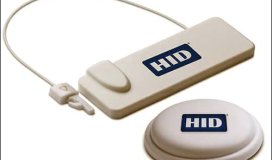During the past year, aircraft suppliers have been ramping up their RFID tagging solutions to meet the demands of Airbus and Boeing. Both aircraft companies have a timetable which suppliers are expected to meet with regard to tagging a subset of the parts they make that will be built into airplanes. To meet those needs, industrial and safety printing technology company Brady Corp. released its second-generation Aerospace RFID Solution last year, in order to offer a complete RFID printing and encoding solution as they adopt ultrahigh-frequency (UHF) RFID systems.
As part of the solution, the company has been selling its software, RFID printers, handheld readers and labels primarily to European companies that serve Airbus. More recently, the demand has expanded to North American suppliers. Case in point: this summer, Rockwell Collins signed a contract to provide RFID labeling solutions to companies for use within their own operations. This printing and encoding system from Brady will produce on- and off-metal tags used to wirelessly identify and track flyable parts, including oxygen generators, for Rockwell Collins.
Brady makes 11 different styles of ATA Spec 2000-compliant RFID tags, nine of which are printable on rolls. That is the largest offering of aerospace-compliant RFID labels to date, says Wesley Columbia, Brady's global strategy and marketing manager. The company has aimed to meet a wide diversity of needs, he says, based on products ranging from a fuel line or mechanical part to life vests and oxygen generators.
The Aerospace RFID Solution is a subset of Brady's SmartID business unit that provides RFID printing, encoding and reading solutions. Brady has a long history developing a large number of tags for the aerospace industry, Columbia says, even before it offered RFID-based technology. "RFID was a natural evolution, considering Brady's material science and RFID expertise. Many of these include different tag constructions" and designs. For instance, the company's dual-record tag can store data related to maintenance and other historic events. Authorized parties can then access this information via the RFID tags. That is not sufficient in some cases, however, and the company also offers a multi-record memory tag that is designed to store part maintenance history for the life of an aircraft part.
The form factors themselves vary from flexible alloy on-metal tags to rigid on-metal tags, in addition to air tags designed for safety equipment. Brady leverages its own manufacturing background to create a chemical-resistant surface on its tags. That means fluids (such as Skydrol) and kerosene fuel cannot damage the printed information on the tags. In some circumstances, UHF tags from other parties require that users acquire over-laminate material to protect their tags from the corrosive damage of chemicals aboard airplanes.
Brady's Aerospace RFID Solution includes the company's own desktop software to manage the printing and encoding of tags, as well as an RFID printer-encoder co-developed with Honeywell to print and encode labels, including on-metal tags—on rolls, at a user's site. Brady also provides handheld readers (either a Nordic ID model or a Zebra Technologies MC9190-Z reader) and software that manages the collected read data and enables encoding with the devices.
Thus far, Columbia says, most customers are early adopters of RFID that aim to meet Airbus's tagging requirements, including a majority of the 25 largest suppliers. In recent months, he notes, that customer base has expanded into North America to meet similar requirements from Boeing.
Rockwell Collins intends to use the Brady solution for on- and off-metal tags to identify its flyable parts—which, Columbia says, includes oxygen generators used by passengers. The tags will be utilized on items with both flat and curved surfaces. Rockwell Collins will use the tags with their existing manufacturing workflow systems.
Some use cases from Brady's other customers include fuel lines, electronic components, passenger seats, oxygen generators and life vests.
Some companies also intend to employ RFID tags to collect and store the maintenance histories and expiration management of oxygen generators. Each generator consists of a metal cylinder inside an enclosure, installed in a compartment above every passenger seat. In the event of an emergency, a mask will drop from the panel above each seat, and the generator will then provide the necessary oxygen.



